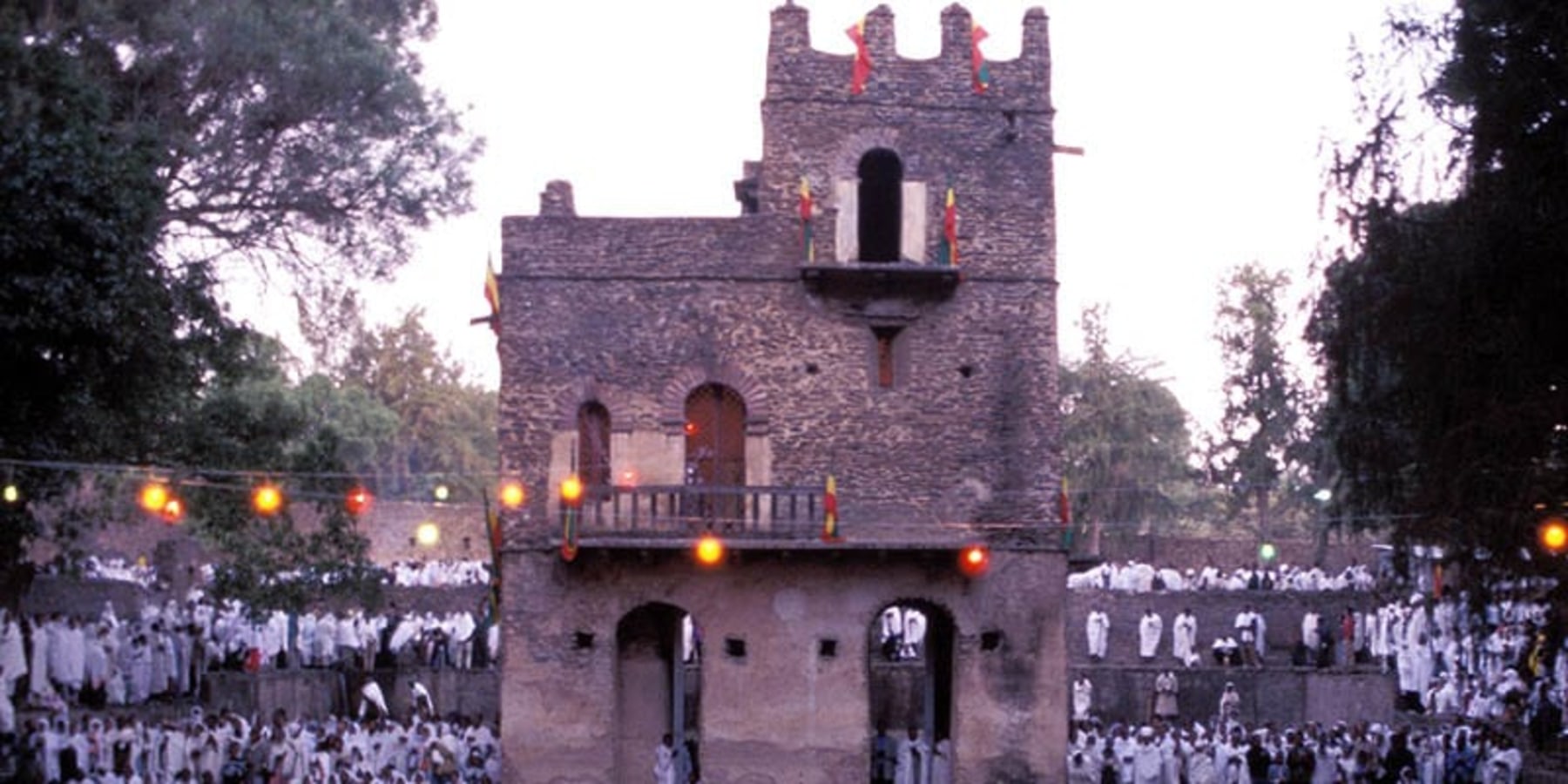
Timket, Feast of Epiphany, is the greatest festival of the year, falling on 19 January, just two weeks after the Ethiopian Christmas. It is actually a three-day affair, beginning on the Eve of Timket with dramatic and colorful processions. The following morning, the great day itself, Christ’s baptism in the Jordan River by John the Baptist is commemorated. The third day is devoted to the Feast of St Michael, the archangel, one of Ethiopia’s most popular saints.
Since October and the end of the rains, the country has been drying up steadily. The sun blazes down from a clear blue sky and the Festival of Timket always takes place in glorious weather.
Enormous effort is put into the occasion. Tej and Tella (Ethiopian mead and beer) are brewed, special bread is baked, and the fat- tailed African sheep are fattened for slaughter. Gifts are prepared for the children and new clothes purchased or old clothes mended and laundered. Everyone men, women and children appear resplendent for the three-day celebration. Dressed in the dazzling white of the traditional dress, the locals provide a dramatic contrast to the jewel colors of the ceremonial velvets and satins of the priests’ robes and sequined velvet umbrellas.
On the eve of 18 January, ketera, the priests remove the Tabots from each church and bless the water of the pool or river where the next day’s celebration will take place. It is the Tabot (symbolizing the Ark of the Covenant containing the Ten Commandments) rather than the church building which is consecrated and accorded extreme reverence. Not to be desecrated by the gaze of the layman, the engraved wooden or stone slab is carried under layers of rich cloth. In Addis Ababa, many churches bring their Tabots to Jan Meda (the horse racing course of imperial days) accompanied by priests bearing prayer sticks and sistra, the ringing of bells and blowing trumpets, and swinging bronze censors from which wisps of incense smoke escape into the evening air. The Tabots rest in their special tents in the meadow, each hoisting a proud banner depicting the church’s Saint in front.
The priests pray throughout the long cold night and mass are performed around 02:00. Huge crowds of people camp out, eating and drinking by the light of flickering fires and torches. Towards dawn, the patriarch dons a golden cross and extinguishes a burning consecrated candle in the water. Then he sprinkles water on the assembled congregation in commemoration of Christ’s baptism. Many of the more fervent leaps fully dressed into the water to renew their vows.
Following the baptism the Tabots start back to their respective churches, while feasting, singing and dancing continue at Jan Meda. The procession winds through town again as the horsemen cavort alongside, their mounts handsomely decorated with red tassels, embroidered saddle cloths, and silver bridles. The elders march solemnly, accompanied by singing, leaping priests and young men, while the bathing of staffs and prayer sticks recalls the ancient rites of the Old Testament.
Tour can be customized and combined with other sites

